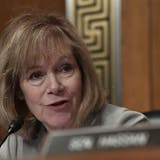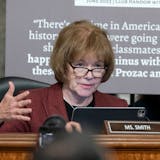A small airplane recently spotted circling several Twin Cities locations, including the Mall of America, has been identified as part of a fleet of FBI surveillance planes flying over targets across the country.
The flight path and ownership records of the plane in Minneapolis made it conspicuous to aviation buffs, and a Star Tribune story last week compared it to known surveillance flights by single-engine, propeller-driven aircraft over other cities.
The link was confirmed in an Associated Press investigation published Tuesday that said the FBI has been operating scores of planes carrying video and, at times, cellphone surveillance technology. The planes are registered to fictitious companies set up by the government.
The Cessna 182T Skylane that circled downtown Minneapolis and then the megamall for several hours on a recent night is among those traced back to the FBI by Associated Press reporters. The plane, N361DB, was modified with a German-made silencing muffler and carries an infrared surveillance camera, according to government records obtained by the Star Tribune.
The planes' surveillance equipment is generally used without a judge's approval, and the FBI said the flights are used for specific, ongoing investigations, according to the Associated Press. The agency said it uses front companies to protect the safety of the pilots and aircraft. It also shields the identity of the aircraft so those on the ground don't know they're being watched by the FBI.
The flights come at a time of national debate over government surveillance, with Congress recently changing some government surveillance powers and putting an end to the National Security Agency's bulk collection of phone records.
During the past few weeks, the Associated Press tracked planes from the FBI's fleet on more than 100 flights over at least 11 states plus the District of Columbia, most with Cessna 182T Skylane aircraft. The FBI confirmed for the first time the wide-scale use of the aircraft, which reporters traced to at least 13 fake companies, such as FVX Research, KQM Aviation, NBR Aviation, PXW Services and LCB Leasing, all based in Bristow, Va. The plane in Minneapolis is registered to LCB Leasing. At least 115 planes, including 90 Cessna aircraft, were mentioned in a federal budget document from 2009.
The FBI is not the only federal law enforcement agency to take such measures.


